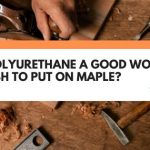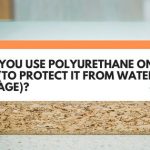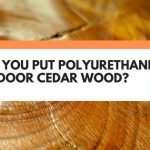Polyurethane is used as a top coat because it is so durable. Not much will get past poly sealer once it has dried, hardened and cured onto the surface of wood.
But, what do you do if you begin to notice little spots marring your polyurethane coat.
Well, those numerous little dust pimples are actually bits of grit that have landed on still wet polyurethane, (or they were already there on the wood surface).
Now, these specks of dust will make your poly surface appear pock-marked – leaving you with anything but the smooth finish you wanted.
So, what can you do to get rid of the unsightly dust nibs in that polyurethane finish?
It depends on where you’re at with your wood finishing;
- If you are still in the middle of applying 2-3 coats of polyurethane: Scuff sand between each coat, then wipe the surface (post-sanding) with mineral spirits to remove grit, dust and dirt.
- If you’ve already finished applying your 2-3 coats of polyurethane, and there’s dust nibs all over the cured polyurethane: You will need to sand off that top poly coat.
Seems simple enough, right? Just sand and wipe. However, if you’ve already been meticulously wiping between coats – why do those dust nibs continue to appear?
Well, the exact type of cloth you use to wipe wood with matters. And scuff sanding is a distinct sanding technique that’s far from like trying to sand wood smooth.
Related Post: Beginners Guide To Sanding Plywood (What You Need To Know)
So, in this article, we are going to cover exactly why those dust bits keep cropping up, how you should properly clean and wipe them off, and what you really need to do to get rid of those nibs once and for all...

This post may contain affiliate links to products that we receive a commission for (at no additional cost to you). Learn more here.
First Off, Does Polyurethane Always Tend To Attract Dust?
Polyurethane doesn’t attract dust any more than any other finish. However, it can appear like polyurethane is a dust magnet, due to the length of time this finish takes to cure.
Dust will settle on anything, if you give it time enough. And brushing on a fast-drying polyurethane can take around 4-6 hours to evaporate into a solid film. That’s plenty of time for dust to settle and nestle in before polyurethane can dry.
You can speed up poly’s drying time by making each coat thin – or by using a wipe-on poly. Wipe-on poly takes as little as 2-3 hours to dry. Which can go a long way to giving dust less time to settle on that finish.
Related Post: Polyurethane Not Drying? What You Can Do To Fix It
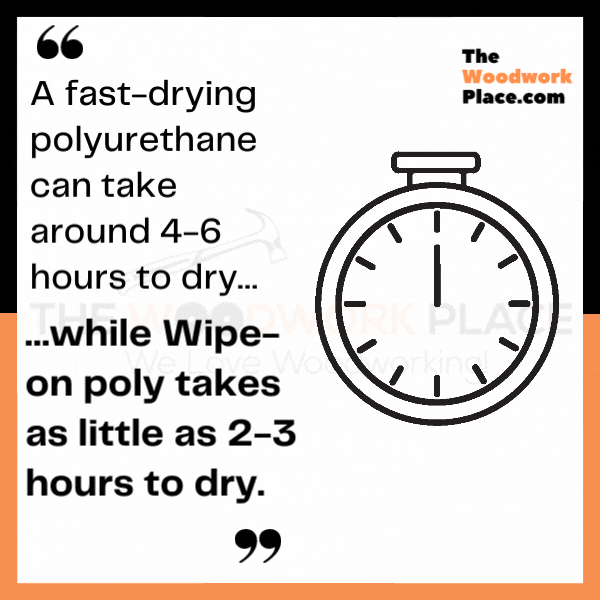
So, What Are Those Dust Nibs Really?
Dust, grit, dirt, lint… basically anything light enough and small enough that it can drift on a gust of air.
For a catch-all term, we can just call them ‘particulates’. Regardless of what they are, they are the cause of all of those tiny indents.
And How Do You Prevent Dust Nibs In The First Place?
Okay, so before we cover this, let’s just quickly point out that polyurethane needs around 2 to 3 coats to properly seal the surface of wood.
More is better (if you want greater durability) – but less rarely is.
Now, because dry polyurethane has such a smooth almost-plastic coat, it can be hard for subsequent coats of poly to adhere to it.
So, we need to ‘scuff’ up the surface of that dry polyurethane undercoat a little. This will give each subsequent polyurethane coat something to hang onto.
Scuff Sanding
You need to lightly sand the polyurethane between coats using a high grit sandpaper (ideally 320 grit sandpaper).
How Do You Scuff Sand Polyurethane (Quick And Simple)
1). Wrap the sandpaper around a sanding block (side note: always scuff-sand manually – do not use powered sanding tools).
2). Next, sand using long strokes, with a light touch. Each stroke repeatedly moving in a single direction. Do not scrub back and forth across that polyurethane.
Scuffing roughens up the surface – creating a bit of grip – which is what we want. What we don’t want, however, are large bits of dust grit hanging around afterwards…
Wipe Off Particulates Using Mineral Spirits
Getting rid of those sanding particulates will take more than just blowing off the dust. To make sure that you get rid off every speck, you are going to have to wipe them off with mineral spirits.
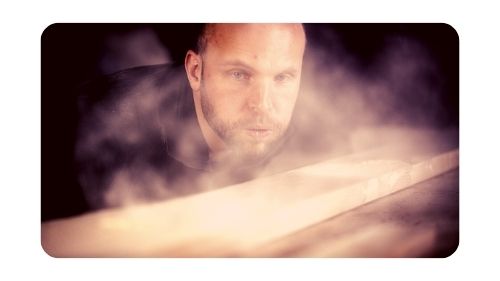
Mineral Spirits, (sometimes referred to as White Spirits), is a clear substance that is used to clean a lot of things – including wood.
You can even use this product to clean mold off of wood itself (without harming or burning that timber).
Related Post: Moldy Wood In A Terrarium? (What You Need To Know)
Which is why this petroleum distillate product is what we use to wipe polyurethane clean.
You can get mineral spirits from any local store. In fact, you can even order it online. Klean Strip has a premium mineral spirit that is virtually odorless (so it can be used while you’re indoors in your workshop).
You can check out the latest prices for this mineral spirit product over on Amazon.com
How Do You Clean Wood After Sanding Polyurethane?
Once you have your mineral spirits to hand, dip a lint-free cloth into it, and wipe off the scuff-sanded polyurethane finish.
Now, this is where we need to point out that you should only use lint-free cloth.
If you use a microfiber or cotton cloth to wipe with, you’ll only end up wiping lint onto the surface. And your dust nib problem will be replace by a lint-particulate problem instead.
What Kind Of Cloth Should You Use To Clean Wood With Again?
Use lint-free cloth, ideally something that’s been designed for wood finishing, such as Rustin’s Lint Free Cloths.
These particular types of cloth will not only make it easy to wipe wood clean, they can also be used to apply oil finishes and wood wax without leaving lint behind.
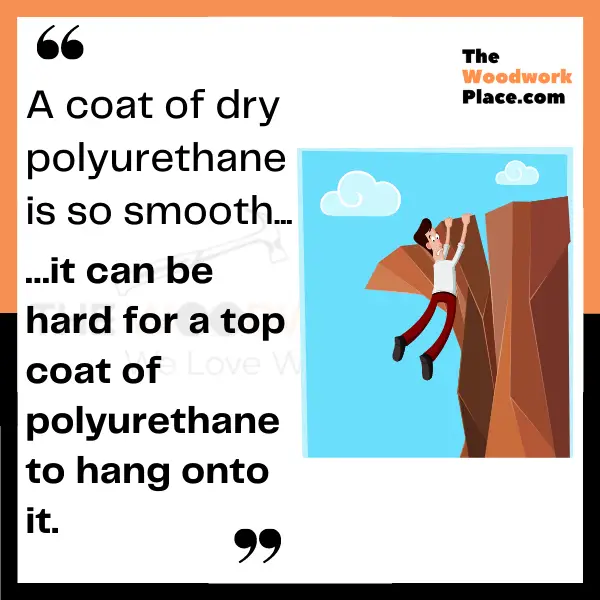
But The Polyurethane Has Already Cured! How Do You Remove Dust Nibs From Cured Polyurethane?
Sanding is your only option here.
You will need to use a lower grit sandpaper (220 grit or lower) to remove the top cured coat of polyurethane. This is because that cured poly will be much tougher and harder to remove (compared to dry poly).
Once you’ve removed that top layer, (side note: you don’t need to sand back down to bare wood), you can then proceed to wipe down the surface with mineral spirits.
Afterwards, reapply that final top coat. That fresh final coat should fix your dust nib problem.

